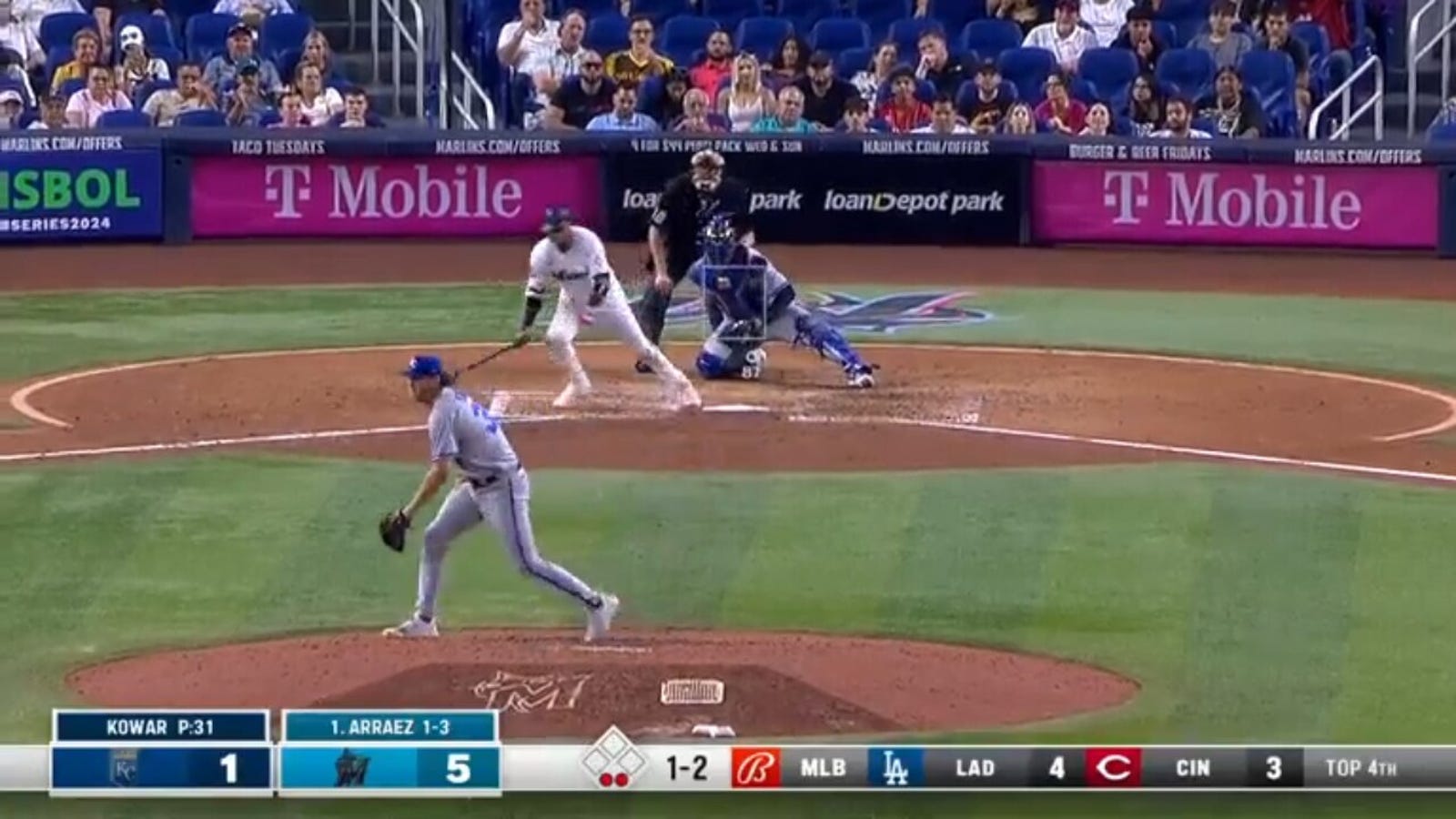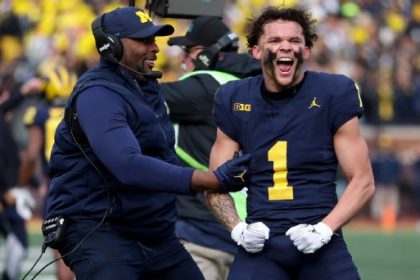Regardless of whether Luis Arráez ends the season still hitting .400, he’s likely to make history this year.
Three years ago, DJ LeMahieu became the first player in the modern era of baseball (since 1900) to win the batting title in each league. Arráez is on pace to join LeMahieu and become the first to accomplish the feat in consecutive seasons.
But .400? It’s not out of the question, either.
On Saturday, Arráez became the first player in Marlins history to collect five hits and five RBIs in a single game. He followed that exceptional performance with two hits on Sunday, another three on Monday and two on Tuesday to raise his batting average in his first season with Miami to .401. It’s about 70 points higher than the next-closest qualified hitters.
Arráez’s average is the highest ever this late into a Marlins season, and it stands out in an era in which the statistic has become more obsolete. But even among those who prefer numbers such as OPS and wRC+ to define a player’s offensive performance, what Arráez is doing is remarkable.
Despite posting the lowest hard-hit rate of his career — he ranks 256th out of 262 qualified players — he is getting on base at such a prolific rate that he ranks sixth in OPS overall (.945) with the highest OPS+ (161) in the National League. Every other player in the top nine in OPS has registered double-digit homers. Arráez has one, which occurred on April 11 in Philadelphia, when he also became the first player in Marlins history to hit for the cycle.
The last time a player finished a season hitting at least .400 was in 1948, when the Negro Leagues’ Artie Wilson and Willard Brown each accomplished the feat. The last player in the American or National League was Ted Williams, who hit .406 for the 1941 Boston Red Sox.
ADVERTISEMENT
Over the past 10 years, the only players to finish a season with a batting average better than .350 were LeMahieu and Juan Soto, when they hit .364 and .351, respectively, in the shortened 2020 season. Since 2000, only four players have hit .370 or better over a full season, and none of them finished close to .400. Ichiro Suzuki (2004), Nomar Garciaparra (2000) and Todd Helton (2000) each hit .372, while Barry Bonds hit a career-best .370 in his 2002 MVP season.
Others have posted similar numbers to Arráez through this point in the year before coming up short of the elusive mark:
- In 2008, Chipper Jones tallied a .400 batting average as late as June 18. He dropped to .394 after a hitless day and stayed below the threshold the rest of the year, finishing the season hitting .364.
- In 2000, Garciaparra raised his average to .403 with a three-hit day in the first game of a July 20 doubleheader before his summer swells came to an end. He went hitless in the second game and, despite winning the batting title, did not return to .400 the rest of the year.
- In 1997, Larry Walker was also hitting over .400 as late as July 17. He finished the first half with a .398 batting average — no player since then has entered the All-Star break with a higher total — but ended the year at .366. Two years later, Walker ended the 1999 season with an even more astounding .379 average, though that came after a late surge.
- In 1994, Tony Gwynn fell under .400 for good on May 16, yet his average never dipped below .376 for the remainder of the strike-shortened campaign. When the season came to a stop on Aug. 12, Gwynn was batting .394, giving him the highest average for a National or American League player since Williams.
- In 1993, John Olerud gave it an even longer run than Walker when he won his lone batting title. Olerud made it all the way to Aug. 2 with a .400 batting average at just 24 years old for the Blue Jays. He finished the season at .363.
The latest anyone has hit .400 in a season since Williams came in 1980 when Hall of Famer George Brett was still above the hallowed mark as of Sept. 4. The eventual AL MVP finished at .390 while hitting 24 home runs.
That is not the profile of Arráez.
In an era of exit velocity and launch angle, Arráez is known for neither. His 101.4 mph max exit velocity this year is not far off from Aaron Judge’s average EV (97.2 mph).
While this year represents a drop-off in his ability to barrel a baseball, he has never hit the ball particularly hard. That did not stop him from ending last season as the AL batting champion, hitting .316 for the Twins. Remarkably, that number is nine points lower than his career batting average entering Tuesday.
The MLB average whiff rate this year is 24.7%; Arráez’s is 6.9.
The MLB average strikeout rate is 22.7%; Arráez’s is 4.8%, despite a 32.1% chase percentage that’s actually higher than league average. Even more remarkable than his career-best 94.1% zone contact rate this year is his 89.5% chase contact rate — a mark 31.3% higher than the MLB average.
Despite pitchers throwing the nastiest, fastest stuff this game has seen, Arráez simply doesn’t miss.
Since 2019, when Arráez burst onto the scene with a .334 batting average over 92 games as a 22-year-old rookie in Minnesota, he has the lowest strikeout rate and fourth-best line-drive percentage in baseball. This year, he has 19 walks and just 11 strikeouts in 231 plate appearances.
Is this level of success sustainable? That’s hard to say.
Arráez sports a ridiculous .414 batting average on balls in play, a number far higher than his career average. Then again, he defies logic.
This year, Arráez is hitting at least .376 against fastballs, breaking balls and offspeed pitches. While everyone else tries to lift the ball and mash, Arráez is a lefty capable of hitting any pitch and spraying the ball to all fields, taking advantage of his shift-restricted environment. Each of the past two seasons, he has pulled at least 30% of his batted balls, hit at least 30% to the center of the field and gone the other way at least 30% of the time.

This offseason, the Marlins recognized Arráez’s value. They dealt Pablo López for the hitting machine, who has helped take a Marlins offense with the third-worst batting average in baseball last season to a group with the fifth-best mark in the majors this year.
In a down year for the NL East, Arráez has also helped a Marlins team with a real chance to make the playoffs for just the second time in the last 20 years.
Perhaps, he can make history in the process.
Rowan Kavner covers the Dodgers and NL West for FOX Sports. He previously was the Dodgers’ editor of digital and print publications. Follow him on Twitter at @RowanKavner.
MLB trending

Get more from Major League Baseball Follow your favorites to get information about games, news and more













